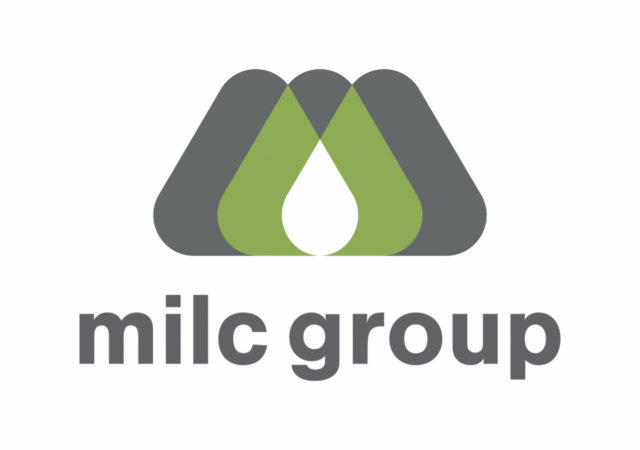U.S. dairy exports in the first half of 2017 were the most in three years, according to a monthly summary from Alan Levitt, vice president of communications and market analysis at the U.S. Dairy Export Council (USDEC). Sales were led by record volumes of nonfat dry milk/skim milk powder and whey products, as well a 24-percent year-over-year gain in cheese exports.
Suppliers shipped 950,291 tons of milk powder, cheese, butterfat, whey and lactose in the first six months of 2017, up 13 percent from last year, and the most for the period since 2014. U.S. exports were valued at $2.77 billion, up 23 percent.
U.S. suppliers have capitalized on favorable pricing and exchange rates this year, and tapped into strong demand from Mexico and China, Levitt said.
Butterfat exports in the first half were 11,975 tons, off 6 percent from last year and the lowest figure since 2009.
On a total milk solids basis, U.S. exports were equivalent to 14.3 percent of U.S. milk production in the first half of 2017 (Table 1). Imports were equivalent to 3.5 percent of production.

Mulhern: U.S. has opportunities in world market
National Milk Producers Federation (NMPF) leaders recently participated in a week-long trip to Europe, finding the U.S. dairy industry has a significant opportunity to grow its share of the world market, if it acts quickly.
U.S. milk production continues to outpace growth in domestic consumption, NMPF president and CEO Jim Mulhern wrote in his August column. Without the development of new markets overseas, U.S. dairy farmers face lower milk prices and increased pressures to survive.
According to Mulhern, Europe does not see the U.S. as a competitive threat; the view is that the U.S. dairy industry’s focus on its domestic market will keep it from competing more aggressively in foreign markets.
Mulhern said the group came away from the trip recognizing that European Union dairy companies are committed and well-positioned to grow their exports. The European drive to export has been made even more pressing by the twin challenges of the end of production quotas two years ago and the simultaneous loss of the Russian market due to economic sanctions.
Dairy replacement sales rebound
Exports of dairy replacement heifers rebounded in June. The USDA’s Foreign Ag Service estimated 3,479 head were exported during the month, the second-highest monthly total for the year.
The heifers were valued at $5.5 million.
Vietnam was the leading market for the month, taking 1,634 head. Vietnam has now imported 5,040 female dairy replacements so far in 2017. Mexico was the destination for another 1,488 head in June, bringing the year-to-date total to 4,577.
Year-to-date 2017 U.S. dairy replacement heifer exports stand at 16,457 head, surpassing the total of 12,216 for all of 2016 and 16,171 for all of 2015.
After setting a five-month high in May, June exports of dairy embryos slipped slightly to 785. The embryos were valued at $807,000. Japan and China were leading buyers.
Alfalfa hay exports remain strong
June exports of alfalfa hay fell off slightly in June, but year-to-date sales remained at a record-high pace. U.S. alfalfa hay exports topped 237,000 metric tons (MT) for the month, the lowest total since February, but the fifth consecutive month sales volumes topped 200,000 MT in 2017.
China was the leading foreign market for alfalfa hay during the month, at about 109,210 MT. However, low milk prices in China are limiting that country’s ability to buy premium hay at premium prices, according to Christy Mastin, international sales manager with Eckenberg Farms, Mattawa, Washington.
June 2017 sales of other hay remained average relative to recent history. Monthly sales totaled 118,115 MT, with reduced sales to Japan offset by gains to South Korea, which suffered heavy rain damage to its domestic crop, Mastin said. Demand for U.S. hay is expected to remain strong there into fall.
June exports of alfalfa cubes and meal were little changed from May.
U.S. ag trade returns to surplus
After turning in its first monthly trade deficit in a year in May, the U.S. ag trade balance returned to a surplus in June.
Overall June 2017 U.S. ag exports were valued at $10.442 billion. Monthly U.S. ag imports were valued at $9.973 billion. As a result, June’s U.S. ag trade surplus was $449 million.
May’s deficit was due in part to the timing of soybean marketing patterns, said the USDA’s Bryce Cooke.
U.S. ag exports for the first nine months of this fiscal year are at $109.3 billion, $12.6 billion more than the same time in 2016, and more than $19 billion higher than imports. ![]()

-
Dave Natzke
- Editor
- Progressive Dairyman
- Email Dave Natzke






